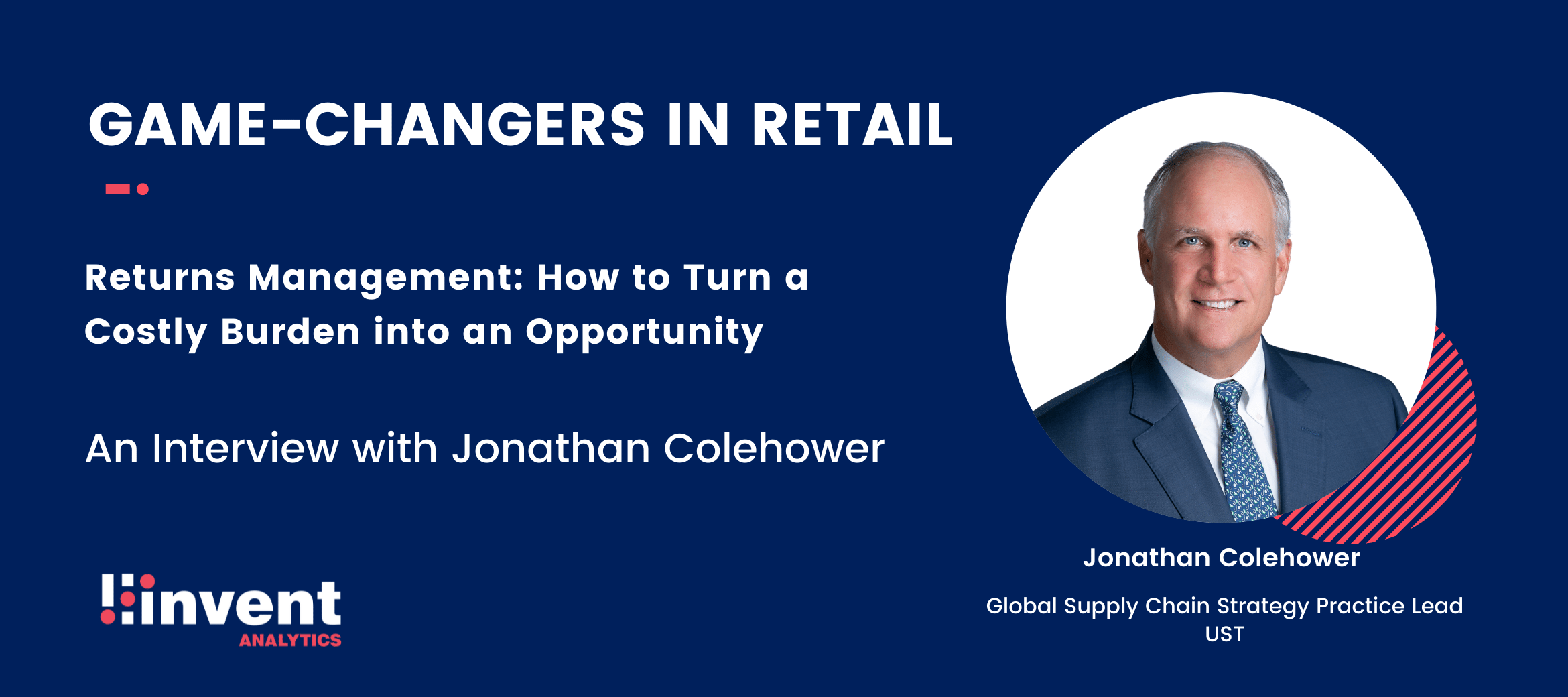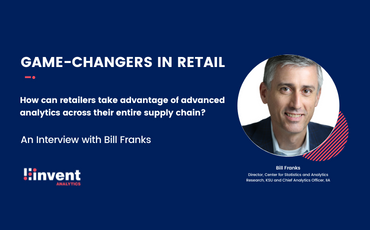
Returns Management: How to Turn a Costly Burden into an Opportunity
Game-changers in Retail: An Interview with Jonathan Colehower, Global Supply Chain Strategy Practice Lead at UST
Retailers have always had to deal with product returns. But with the explosion of e-commerce and omni-channel transactions, returns have increased significantly. Today retailers are rethinking their policies, practices, and procedures to deal with this costly challenge.
In this Game-changers in Retail Series, we sat down with Jonathan Colehower, who has over 20 years of experience in the supply chain domain. We talked about how retailers can manage returns processes successfully and turn this costly burden into an opportunity.
1. Why do you think managing returns is so challenging for retailers?
Today returns are a significant pain point for many retailers. Returns come with a unique set of challenges, including reverse logistics, product disposition strategy, seasonal category constraints, and potential markdowns. On top of that, the competitive pressures of the industry force many retailers to accept all returns or risk losing their customers. The ability to effectively manage returns can be the difference between success and failure in this highly competitive landscape.
I think the growth of online channels and lenient return policies have significantly increased the volume of returns, and this trend is likely to continue. The way consumers shop has evolved in the last couple of years. Technology has changed the way we communicate, and it's changed the way we buy things. Shoppers are now more likely to buy multiple sizes, colors, and styles of a product online and return all but one.
Even though investment in returns avoidance technologies is becoming more popular to deal with the returns, many retailers are still having a hard time as managing returns is a complex process.
2. Returns jumped to an average of 16.6% in 2021 versus 10.6% a year ago, according to NRF. How do you see the cost of returns for retailers in 2022 and beyond?
It’s no surprise that returns are on the rise. Keep in mind that they are also inevitable and costly. But they are a must to keep customers happy. So, retailers must consider implementing tools, policies, and practices to limit returns first and foremost. And, when returns occur, they need to adopt robust supply chain processes to handle these returns in a manner that controls costs, dispositions products faster, and improves customer loyalty.
Retailers also need to understand the levers that can optimize their return operations. As the product travels back to the warehouse or store, each step is a challenge but also an opportunity for reducing costs and improving cashflow and profitability.

3. What impact do returns have on inventory planning? What should retailers do better?
Returns are a significant problem for inventory planning teams. Especially for apparel retailers where the product lifecycle is short. For every day that a consumer delays returning an item, the probability of having to markdown the item increases.
Therefore, retailers need to look into leveraging AI-powered inventory planning solutions to power their return management. They can use advanced analytics and machine learning algorithms and utilize business intelligence analytics to understand demand patterns, consumer behavior, cost structures, and transactional volumes.
Having the right analytics, retailers can find the most profitable disposition methodology for a return by optimizing the best path for a return.
4. Do you think return forecasting is an essential part of returns management?
Returns forecasting is an essential part of returns management, as it helps retailers anticipate the volume and timing of returns, they will receive. We also know that returns can be disruptive to a business, so retailers want to be able to plan for them.
The main goal of returns forecasting is to look at past data and predict future return rates. This information can help retailers make better decisions about inventory levels, which can help lower their costs—and keep their customers happy.
5. How can retailers improve forecasting of the returns?
The best approach to improving return forecasting is to develop micro-profiles of consumers: Segment consumers not only on buying behaviors but also on returning behaviors. For example, if you notice that one segment of consumers tends to return more frequently than others, you might want to adjust your return policy and replenishment practices.
Also, the responsibility can’t fall on the inventory planning organization. Merchandising and Store Operations should also share the responsibility.
6. What would be the top initiatives they need to take to turn a costly burden into an opportunity?
Returns aren't only a problem for retailers but also an opportunity. Here are a couple of things they can do:
Create retail policies with returns in mind
Retailers are increasingly adopting simple, transparent, and generous return policies that inspire confidence and trust. But they need to ensure that their return policies don’t negatively impact their finances and operations.
Implement the right tools
Today there are many tools that can make a big difference in reducing returns and improving sales conversion.
Retailers can leverage sophisticated technologies, apply machine learning, and take advantage of the tools for getting the right fit (such as size guides, custom models, AR/VR tools) and other tools for getting the right product to turn returns.
Keep in mind that an average package is dropped around 17 times. So, packing and shipping items securely can minimize the chances of an item becoming broken or damaged.

7. What would be the most important things retailers need to do to deal with returns in the omni-channel era?
Returns in retail can be an untapped opportunity for retailers to improve margins while retaining a loyal customer base. In the omni-channel era, retailers need to embrace a modern, future-ready approach that can help them create a returns management framework to minimize returns and optimize. I think they should address the trade-off between returns avoidance and expected volume of returns and returns operations. They should also replace one-size-fits-all return policies with purpose-built processes.
Guiding customers at the start of the return process, providing options for returning the product physically, keeping customers informed about the status of their returns, making detailed inspections and audits of returned items and lastly restocking or disposal in an efficient manner are other things that can help retailers deal with returns in the best way possible.
Thank you Jonathan.



